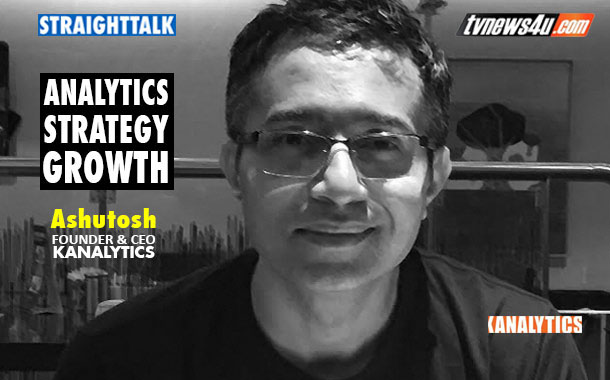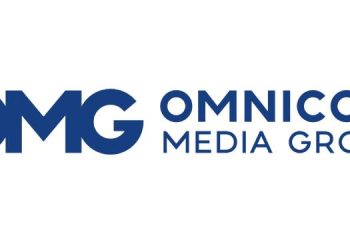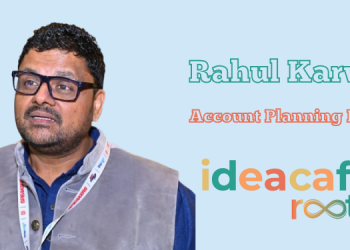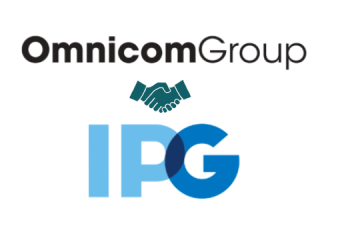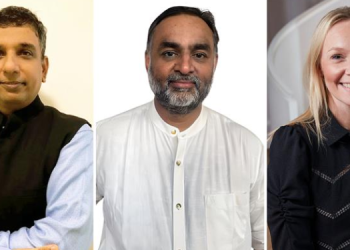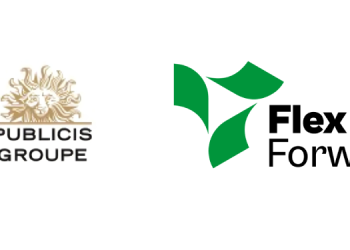He has launched and headed multiple media formats in India. Starting in 1996 as EA to the MD of the Zee Network, Ashutosh (no, the man does not have a second name. Even his passport has just the first name) launched Siliconindia in 2000 as GM India. In 2003, he became Senior VP &Business Head at the Zee Network and headed Zee company ETC. In 2006, he launched the Hindi Movie channel FILMY. Later, he set up the TV business of Reliance ADAG as its Chief Operating Officer, and was also on the Board of the Reliance–CBS JV.
Then,he set his sights on doing something he had been toying with ever since his days at FILMY – to set up a unique and useful integrated media analytics and impact measurement platform to help brand and business custodians operate optimally with insights from industry-wide analytics. Kanalytics.
The first thing that anyone who has known Ashutosh for even a few of the over 16 years he has been working in the Indian Media and Entertainment industry will tell you about him is, the man is tenacious. He lives by the status message on his WhatsApp profile: ‘There’s no plan B in life’. He spent over two years on honing the backend of the entire Kanalytics media analysis platform, and today is working with some formidable clients including huge central ministries, to help them and their operations / businesses with incisive analytics.
We spoke with Ashutoshon analytics and its importance in formulating marketing strategy for better business results, and at length about his venture, Kanalytics, which is India’s only integrated Media Analytics and Impact Measurement platform.
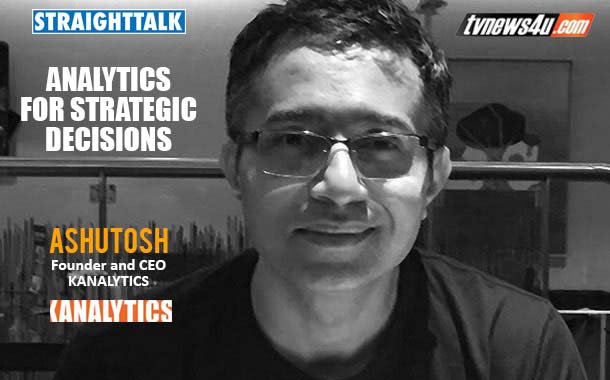
Tell us about this big focus area of Big Data and Media Analytics.
Happily, analytics is getting understood now, and of late, people have been appreciating its importance. Be it in Consumer Retail, Online businesses, Finance products or Social Media, understanding the traits of each person to target the right product is key. Secondly, analytics is mostly seen as referring to big unstructured data.
So what do you do at kanalytics?
We go far beyond how normally unstructured data is treated. We actually deal in qualified data, since we apply our analytical tools on a much higher level of qualitative terms. This involves thematic analysis, industry analysis, medium analysis, etcetera, and these are both, manual and software-led. Our mix of manual and software-led analytics is superior to a pure-software-led analysis which, while it may be easier, is certainly not comprehensive, and offers much less of implementable intelligence.
In fact, let me also touch upon another important thing. We need to differentiate tracking from analytics. Tracking is to extract your mentions across one or more mediums and offer them to the brand owner, whereas analytics is a far bigger concept.
As an industry, analytics is amongst the hottest, because people are realizing how understanding a person or a situation or a brand across various parameters helps build Marketing and Communications strategies. The game is not about gathering information about the past; it is about how to exploit the information, and how to build further in the right direction. A cut-paste of articles is passé, similar to merely calculating the number of tweets – these aren’t helping us in our business goals.
So how does analytics help a business take strategic decisions?
You just summed up the core promise of what we do. We aren’t about just Social Media, or Print, or Television or the Web. We are a one-stop shop media strategy partner, and help our clients set Media Impact benchmarks and we help them take business decisions.
Our key strength is analysis, and results appear daily. Monthly or periodic post-mortem reports have no place for brands today. Unless we guide the brands towards their goals, handholding them, analytics or the wisdom therefrom will be of no use. Time is critical.
Of course, the measurement of Impact on Media across mediums is essential, and our proprietary Kindex is that measure. Our clients can set targets of impact and see their brands grow.
Kindex… Kanalytics… Are these from a belief in the lucky ‘K’ series, as in the TV serials of some years ago?
(Laughs) No. We are about strategic analysis, and we decided to name our firm with the first letter of my partner’s name. And Index became Kindex. (Smiles)
To complete what I was saying, in fact, we also create dossiers on every journalist who may impact the life of your brands. Who’s the one for you, and who’s the one to professionally focus on, to interact with, and to nurture a professional relationship with? These are important aspects no marketer should ignore.
So we know that media tracking is just the first step and not the end…
Certainly not. It is not just about collating media coverage. And mere quantum of coverage will not help us in any way. The number of articles has no bearing on impact. Kanalytics employs over 15 factors in analyzing the quantitative and qualitative impact of each article or post across mediums. In that sense, our platform measures impact on media, and helps you strategize exposure.
The so-called traditional monitoring system would serve no good unless we are able to analyze the impact, and unless it helps me strategize my brand’s future.
What are the drawbacks of tracking across multiple platforms like Print, Tv, Social Media and e-media but with isolated analysis on each from different agencies or vendors?
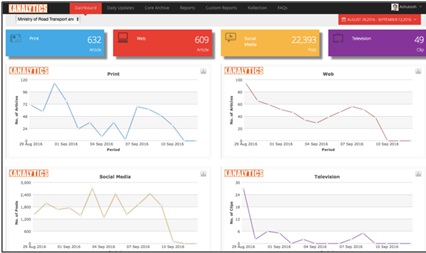
Tracking has been happening for ages, and multiple agencies would offer Print or TV or Social Media coverage for all happenings around a brand, but tracking in multiple formats has always meant plenty of data, multiple formats, etcetera, which no one really read or assimilated.
If some tool has to see itself as a decision makers tool, it has to be an all-comprehensive tool. It has to include all mediums that impact your brand…viz. TV, Print, Web, Social Media at one place, sliced and diced on one set of principles, so that each medium can be exploited better…Sensibilities differ between mediums too….if a Word Cloud works well for Social Media, snaps tend to be remembered on Print for long.
You mentioned your impact measurement tool kindex. Why kindex, and what is unique about it?
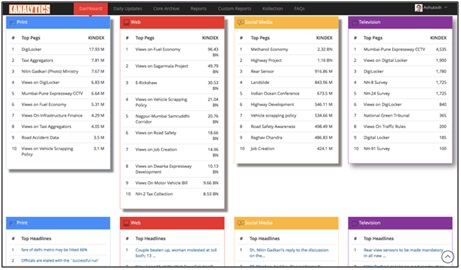
Why Kindex? Well, the problem with most brand custodians today is that of fixing their brand strategy. There are no credible industry benchmarks in earned media analytics, across TV, Print, Social Media & E-Media. While most Social Conversations remain un-accessed, we can’t discount Print and TV yet.
Kindex is a unique measure of Impact on Media. It’s differently calculated for each medium. It is a combined index of building blocks called Coverage Score, Visibility Analysis, and Medium Reach. This helps the Marketing and Communications teams to set targets of achievement. We believe this is the closest to an accurate index of media impact for all kinds of content.
What Kindex offers is a strong solution, by helping the business custodian know peers, the overall industry, hits and misses and opportunities. It also helps map the important conversation creators, i.e. the journalists, Publications, Websites, Bloggers etcetera. Kindex is led by an experienced PR, Marketing & Analytics team, and boasts of India’s first Mobile App for Media Analytics.
What are the buckets you analyze for any client?
As an analytics company, we do extensive benchmarking of each brand with their respective peers. It could be the Corporate, a brand, the top management officials, etcetera. Important is to know how are you faring, and equally important is that you know how your industry is doing. What are your hits and misses?
Which sectors are your clients in?
Kanalytics helps fulfill partners needs from multiple industries. We help provide invaluable strategic inputs to the PR and Marcom teams of our clients. In Fact our services are completely sector-agnostic.
All industries, Corporates and brands that want to be well represented in the public domain — be it Finance Companies, the entertainment industry, infrastructure, politics, government bodies and more. We have active clients in each of these industries already.
On the entertainment side — from tv shows analysis to movie industry and all its aspects, to personality and peers analysis, to customer behaviour patterns, content development insights and more.
How do you ensure real-time inputs and access?
We have the most advanced online / mobile app platform in this industry available anywhere in the world. Over 200 graphs, with easy accessibility and customizable formats, are available. In any case, it is completely proprietary, and therefore, customizable. The idea is to be the backend for our client’s communications strategy, and to provide usable, implementable information.
What kind of customers are you targeting?
As I said, the application has found supporters across corporates, celebrities, Government ministries at the central level, municipalities at the local levels… and they are our partners already.
We also service some Bollywood celebrities. Kanalytics helps them strategize their communications across mediums as well as do peer analysis all of which, of course, dovetails inputs into their communication strategy.
I cannot name the stars because there is confidentiality for obvious reasons – see, every star wants to remain top of mind because it is an indication of their popularity which has a direct impact on their careers too. So even as every star is busy trying to remain top of mind, they don’t want to be seen as actively pursuing that objective. So no names, of course.
However, it also has a SAS model, which can work as the backend for Marketing and PR companies. The entire gamut of information gathering and analysis is done by us on a software platform that’s better than any other. This helps the communications companies like PR agencies to concentrate on what they do best, viz. media relations.
How did the idea for an analytics company like Kanalytics come up?
I have worked over 20 years now, and many times I realised I could never exploit the media to further my brand. We merely gather all kinds of clips from multiple agencies in multiple time zones and remain happy.
The genesis was a request from the Chairman of an Insurance company when he asked me to create a TV clip service. Having launched so many TV channels, this, for me, was a two-day job, really. But importantly, I realised that this clips business isn’t adding value and is not a solution really.
I attended all the top Technology exhibitions like NAB / IBC etc., hunting for a comprehensive solution, but found none. Technology was there but no one had a solution for the decision maker. Finally, we decided to develop our platformand worked on it for 2 years before launching it. We are on the product development side 365 days, both online and on the mobile.
Was your first official client?
(Smiles) The Prime Minister, Mr Narendra Modi. No, actually, it was Mr Modi, much before he became Prime Minister or even before we had developed our online platform. His team believed in our analysis pattern. Even though we weren’t the only digital agency hired by them, it certainly gave us confidence. The fact is you need some platform like Kanalytics to keep all data together, analyze each article, and start building trends in the medium and long term. This is a great help to the Marketing / Communications in the strategy adopted.
What did you do for him?
Our digital media plat form, and our manual analytics were used to analyse media across. That was a huge exercise by their team, and we are happy we contributed…By today capabilities, and what we are doing for our clients today, we could help much more.
Where do you see Media analytics going in the coming few years?
Media Analytics analyses and help predict human behaviour. It will keep on growing as more and more brand owners realise its importance. People are willing to spend millions on Marketing and Publicity, but not even a fraction to know what part of spends gave what kind of results. Such analytics helps to fine tune spends, reduce waste, and know the right path ahead.
Intrusive limited sample studies have their own strengths and limitations. Today people communicate, in Fact communicate too much. That’s why the need for big data, big qualitative and quantitative analytics, and hard core number crunching.
Communication needs to be streamlined. It can’t be random. With Advertising and mass media getting expensive, and Editorial losing out on space and even, sometimes, on freedom, things are not that easy, and strategic focus is very important.

